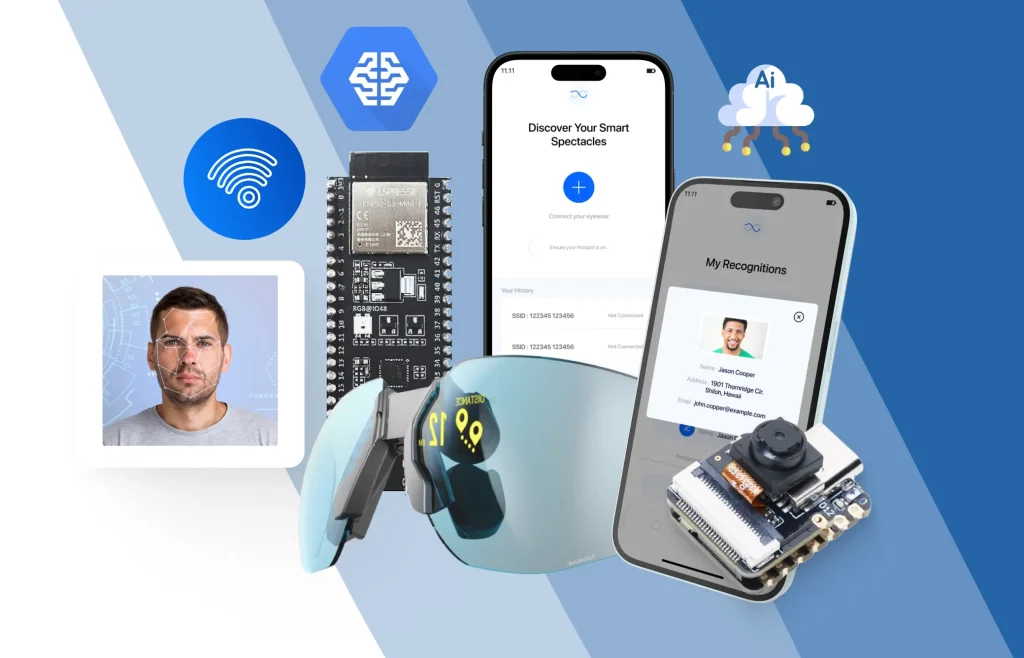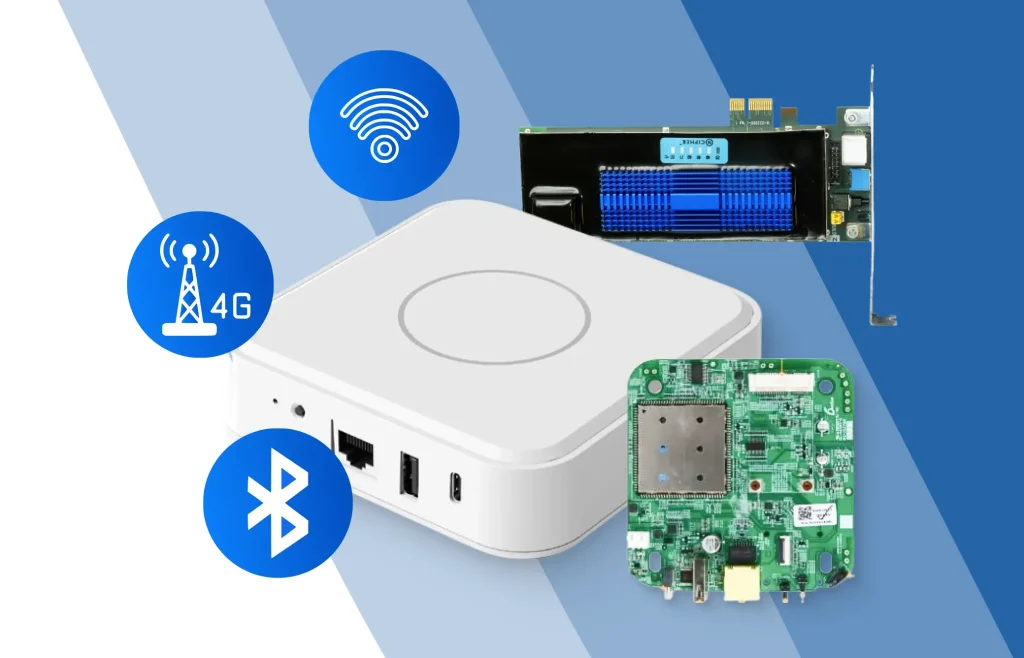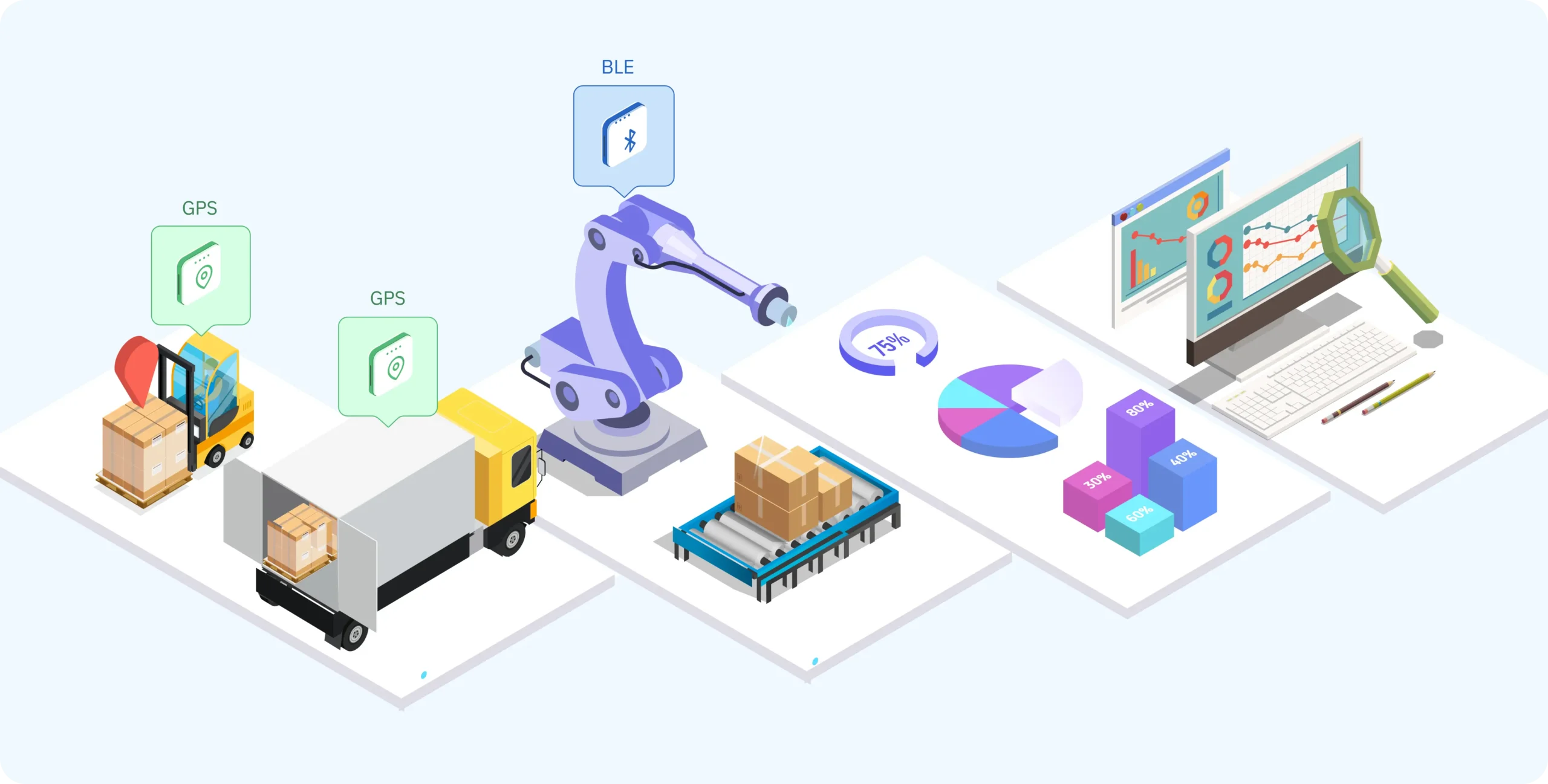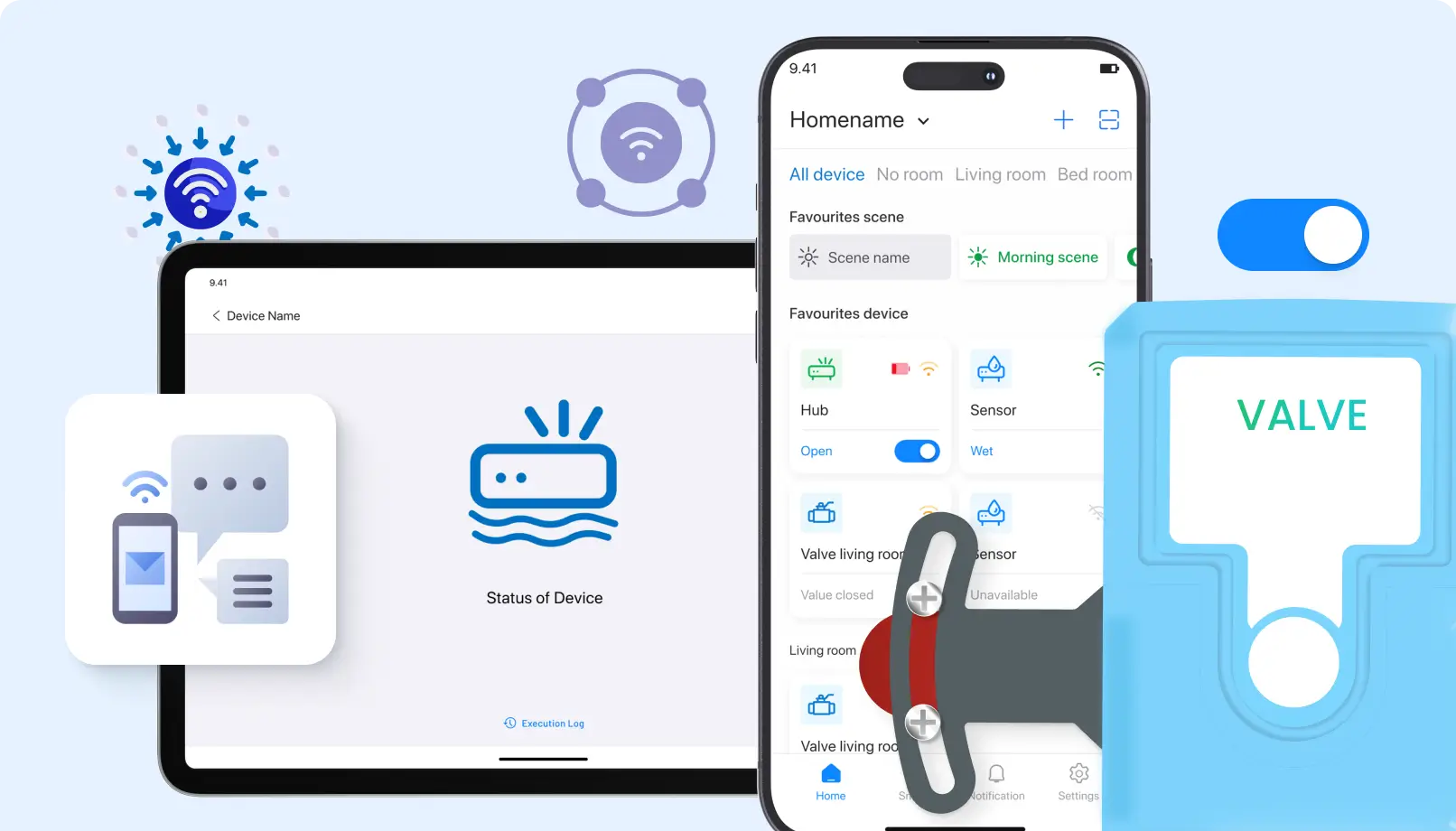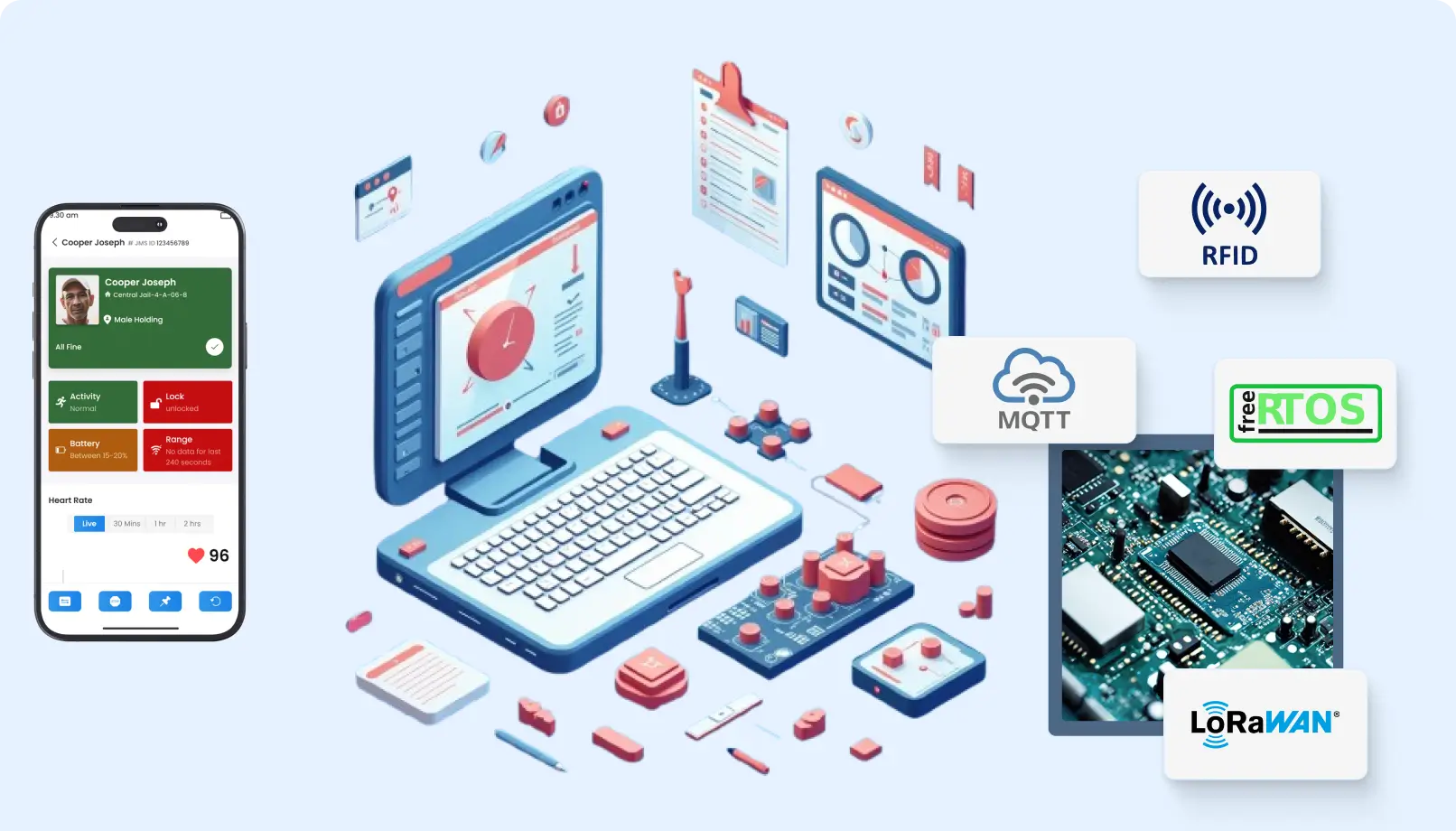Introduction to ESP32
The ESP32, developed by Espressif Systems, has quickly become one of the most versatile and cost-effective system-on-chips (SoC) in the IoT industry. With its integrated Wi-Fi, dual-mode Bluetooth, and robust processing capabilities, ESP32 is widely adopted for a range of applications. From smart home automation to healthcare and industrial automation, ESP32 stands out as a key enabler of connected devices. This guide delves into the unique features of ESP32, providing real-world use cases that showcase how it’s transforming industries.
Whether you’re interested in ESP32 development, IoT solutions, or specific applications in smart home automation or healthcare, this article will provide valuable insights.
Unique Features of ESP32
1. Integrated Wi-Fi and Bluetooth
One of the standout features of ESP32 is its 2.4 GHz Wi-Fi and dual-mode Bluetooth capabilities. The integration of Classic Bluetooth and Bluetooth Low Energy (BLE) makes ESP32 ideal for IoT applications that require both local device-to-device communication and internet connectivity. This combination allows for seamless wireless communication in a variety of environments.
2. Low Power Consumption
A key advantage of the ESP32 microcontroller is its exceptional energy efficiency. It supports multiple power-saving modes, including a deep sleep mode where power consumption can drop as low as microamps. This is particularly beneficial for battery-powered devices like wearables or remote sensors that need to operate for extended periods without frequent charging or battery replacements.
3. High Performance with Dual-Core CPU
The dual-core Tensilica LX6 microprocessor is at the heart of ESP32, capable of running at a clock frequency of up to 240 MHz. This powerful processor allows for simultaneous handling of multiple tasks, including real-time data processing, sensor management, and machine learning applications. The high performance makes ESP32 an ideal choice for data-intensive IoT applications.
4. Rich Peripheral Interfaces
ESP32 offers a range of peripheral interfaces such as UART, SPI, I2C, PWM, ADC, and DAC. These interfaces allow the board to interact with a wide variety of sensors, actuators, and other peripherals, making it highly adaptable to different projects. From smart agriculture to industrial automation, the board’s flexibility enables seamless integration with almost any external hardware.
5. Advanced Security Features
Security is critical in IoT deployments, and ESP32 excels in this area with features like hardware encryption, secure boot, and flash encryption. These built-in security measures ensure that data transmitted by ESP32-based devices is protected from unauthorized access and cyberattacks, making it a preferred choice for applications where data privacy is paramount.
6. Over-the-Air (OTA) Updates
The OTA (Over-the-Air) update capability of ESP32 enables remote firmware updates without physical access to devices. This feature is essential for large-scale IoT deployments or devices installed in hard-to-reach locations, allowing developers to roll out software enhancements or security patches effortlessly.
Real-World Use Cases of ESP32 Development
1. Smart Home Automation
The ESP32 is transforming smart home automation, where devices need to communicate seamlessly with each other and the internet. It has been widely used in smart home devices such as lighting systems, thermostats, security cameras, and smart plugs. Through mobile applications or voice assistants like Google Home or Amazon Alexa, ESP32 devices can be controlled wirelessly.
Use Case: Smart Plugs and Lighting Systems
An ESP32-based smart plug can control household appliances remotely. For example, it can activate based on inputs from motion sensors or a schedule. Similarly, smart lighting systems using ESP32 can automatically adjust brightness or turn on/off based on ambient light levels, ensuring energy efficiency.
2. Wearable Devices
With its small form factor, low power consumption, and wireless connectivity, ESP32 is an excellent choice for wearable devices. These devices, such as fitness trackers or smartwatches, can monitor a range of health parameters like heart rate, steps, and sleep patterns.
Use Case: Fitness Trackers
ESP32-powered fitness trackers can pair with smartphones via Bluetooth, transferring real-time data on steps, heart rate, and other health metrics to a cloud-based platform for long-term monitoring. Due to ESP32’s efficient power management, these devices can operate for days on a single charge.
Use Case: Health & Location Monitoring
An ESP32 based Wearable gadgets (hand cuffs) designed to monitor the Heart Rate, Accelerations, Magnetometer, Gyro of US prisoners under arrest. This was primarily developed to prevent custody deaths and monitor live location of inmates.
3. Industrial Automation
In industrial environments, the need for real-time data and automation is growing rapidly. ESP32’s high-performance CPU and wireless connectivity make it ideal for monitoring production processes and equipment health.
Use Case: Predictive Maintenance in Factories
ESP32 can be used to monitor equipment through vibration sensors, temperature sensors, and pressure gauges. This data, processed in real-time using machine learning algorithms, can predict equipment failures before they happen. Such proactive maintenance minimizes downtime and reduces operational costs.
4. Agriculture
IoT is revolutionizing agriculture, and ESP32-based solutions are enabling precision farming, where resources like water and fertilizers are optimized.
Use Case: Smart Irrigation Systems
An ESP32-based smart irrigation system can monitor real-time soil moisture levels and control water flow to crops only when necessary. This system ensures water conservation while improving crop yields by delivering the right amount of water at the right time.
5. Health Monitoring Systems
ESP32 is also making strides in healthcare, enabling remote patient monitoring with devices like heart rate monitors, glucose sensors, and sleep apnea devices.
Use Case: Continuous Glucose Monitoring (CGM)
For diabetic patients, an ESP32-based glucose monitoring system continuously tracks blood sugar levels and transmits the data to the cloud. Doctors can access this data in real-time, adjusting treatment plans to better manage the patient’s condition.
6. Smart Cities
In smart city initiatives, ESP32 plays a critical role in integrating and managing urban infrastructure like air quality sensors and traffic monitoring systems.
Use Case: Air Quality Monitoring
ESP32-based air quality sensors deployed across urban areas monitor pollution levels in real-time. These sensors report data to a central platform where city officials can take action, such as issuing air quality alerts or adjusting traffic flows to reduce emissions.
Conclusion
The ESP32 microcontroller, with its unique features such as integrated Wi-Fi and Bluetooth, low power consumption, and advanced security capabilities, has become a key player in the IoT ecosystem. Its versatility spans across industries, from smart homes and wearables to industrial automation and healthcare systems. As IoT continues to permeate every corner of our lives, ESP32 development will remain at the forefront due to its efficiency, reliability, and scalability.
Whether you’re planning to integrate ESP32 into your IoT project or explore custom IoT solutions, ESP32 provides the foundational technology needed for a wide array of real-world applications.


